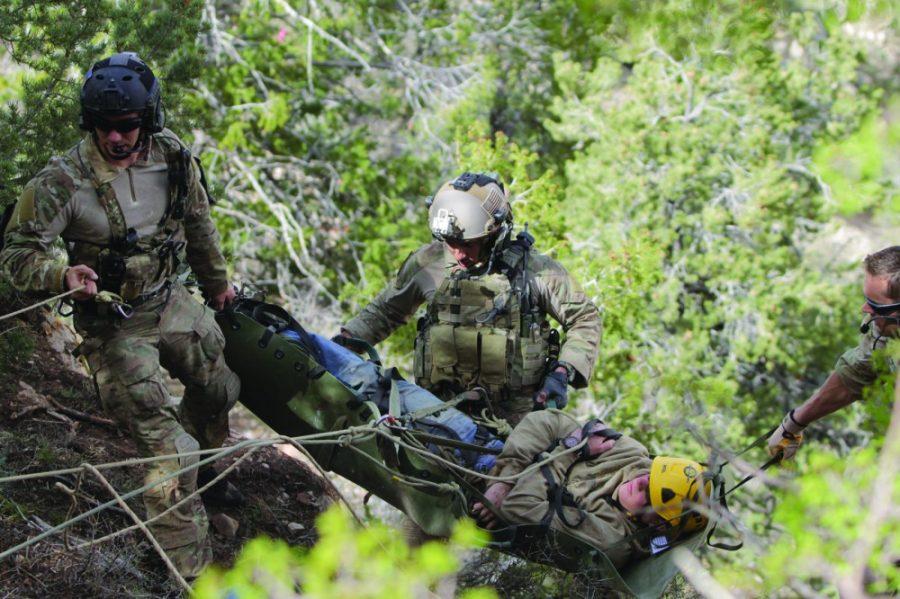Two cars and a bus collide at the Grand Canyon injuring many passengers and bystanders, even throwing some victims over the rim of the Grand Canyon. There was an earthquake the day before, making it so emergency responders were already taxed. The vehicles were fleeing from the epicenter of the earthquake and did not realize that they were coming up on such a hairpin turn.
This was the scenario for a multi-agency rescue operation known as Operation Resolute Angel, which is part of a larger exercise called Operation Angel Thunder. Angel Thunder was put together by the U.S. Air Force and used simulated casualties from the University of Arizona, Arizona State University and Northern Arizona University ROTC programs, among others such as U.S. Air Force Airmen. Cadets, wearing ripped clothing, pretended to be casualties and had to undergo simulated medical treatment.
“The value in having our cadets participate is they get first hand experience seeing emergency responders from various levels of government, Department of Defense, different nations respond to a crisis and in particular, they got a ride on a Air Force C-130 up here from Flagstaff,” said U.S. Air Force Lieutenant Colonel Brandon Doan, the NAU Air Force ROTC detachment commander. “They got to interact with Air Force pararescue men, which is a rare and valuable opportunity, and just also the camaraderie it builds of going through something like this with each other.”
Operation Resolute Angel was conducted Saturday afternoon at Yaki Point in the Grand Canyon National Park and Operation Angel Thunder, which will be running until the 20th, is being held at several different locations.
“It [Resolute Angel] is one of our exercises within our large exercise, we have over 3,000 participants total. Here at the Grand Canyon we have approximately … 150 working just here at the Grand Canyon,” said Brandon Daugherty, the Angel Thunder Logistical Manager who is a Department of Defense civilian. “But we have other participants spread out all over Arizona and New Mexico.”
The purpose of the operation is to simulate an emergency situation where the civilian first responders are overwhelmed and require military help with the situation, according to Daugherty.
There were rescuers participating from the Grand Canyon National Park Search and Rescue team, the Coconino County Sheriff’s Search and Rescue team and U.S. Air Force Pararescue Airman, who are based out of Davis Monthan Air Force Base, according to U.S. Air Force Captain Robert Wilson, an Air Force Pararescue operator and safety officer for Operation Resolute Angel. There were also various ambulance and fire department personnel on the scene.
Casualties were spread throughout Yaki Point. Some were trapped within vehicles, which had smoke rising from them at the beginning of the exercise, with others spread out in the wood line and some over the rim of the canyon. All of the casualties were dressed with fake blood and various types of rubber pieces attached to their bodies to show a variety of injuries. They also wore cards describing their injuries and overall condition.
Getting made into a simulated casualty was not a quick process by any means. The group of Airmen from DMAFB took about an hour to get ready, said U.S. Air Force Technical Sergeant Damon Ballard, who was one of the casualties at Operation Resolute Angel.
This was considered a “mass casualty” situation and a “unique experience,” said U.S. Air Force Lieutenant Colonel Stephen Rush, who was overseeing the medical side of the training exercise. There were “a lot of lessons learned” at Resolute Angel, he added.
There was a total of 50 casualties used for the exercise — four were dummies and the rest were ROTC cadets and U.S. Air Force Airmen.
“The cadets have been doing great. Several media types have approached me and asked where we got our actors from,” Daugherty said. “I have to just attribute this to the character; very, very good professional cadets.”









